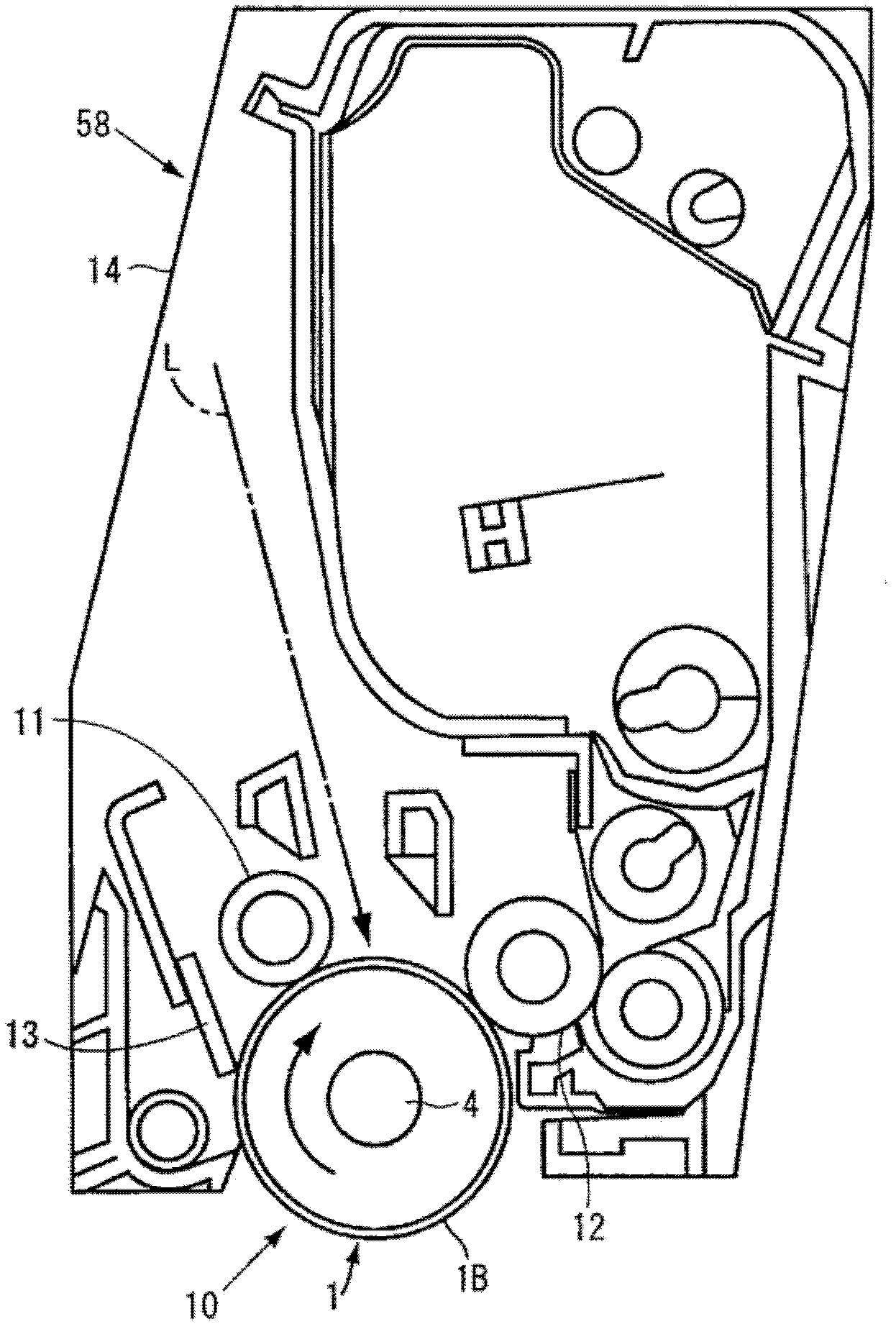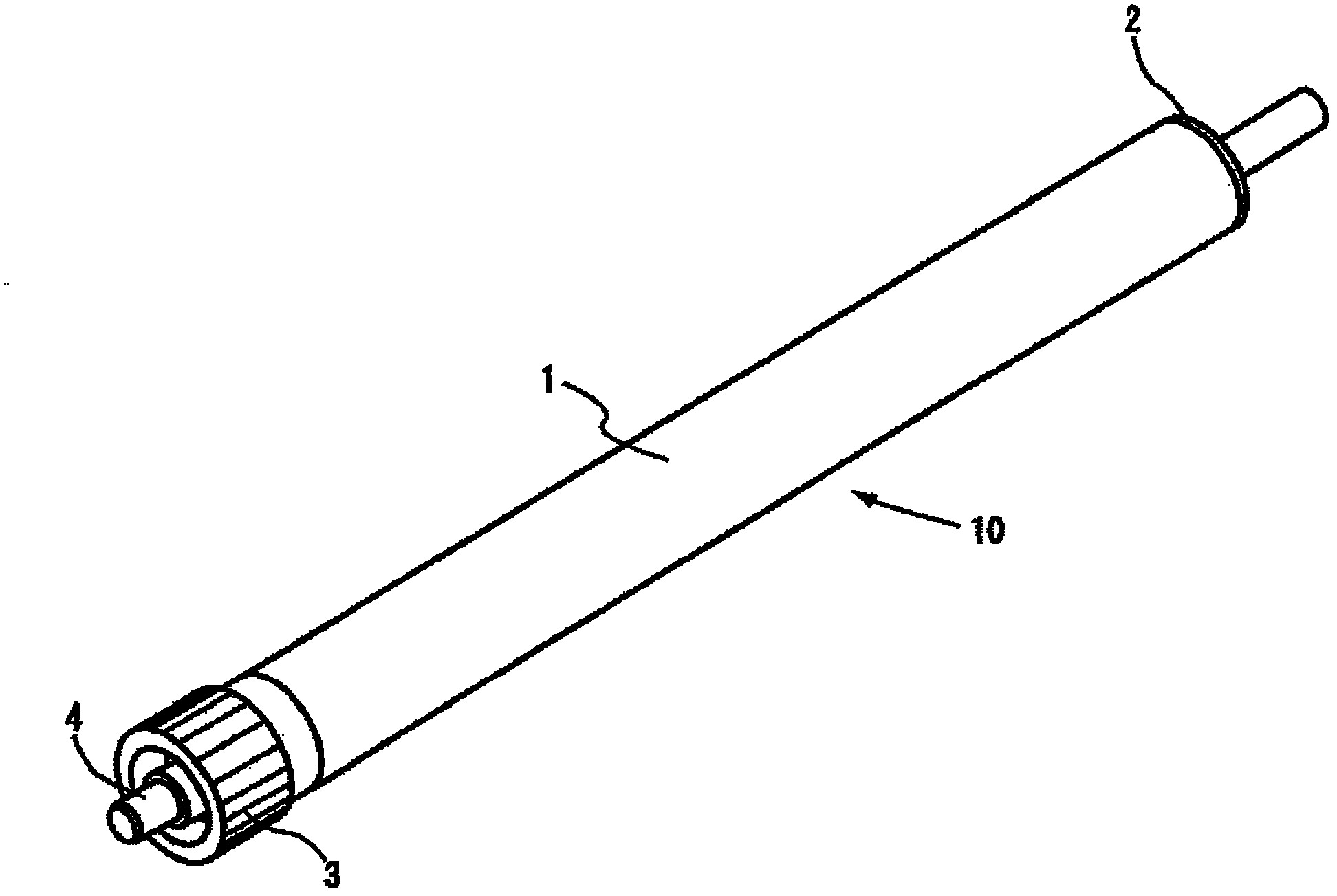Mechanism for electrifying, method of electrifying, and conductive member
A technology for rotating parts, like carriers, used in electrical components, electrical component connections, corona discharge devices, etc.
- Summary
- Abstract
- Description
- Claims
- Application Information
AI Technical Summary
Problems solved by technology
Method used
Image
Examples
Deformed example 1
[0216] refer to Figure 13 ~ Figure 15 Modification 1 will be described. The conductive cloth 6A of Modification 1 is compared with the conductive cloth 6 of Embodiment 1 as follows: Figure 13 , Figure 14 As shown, only the notch 6a is different in that the shaft outer diameter shape 4a is set in the shape of a corrugated line or a folded line crossing a plurality of times. The end portion and the return portion of the notch 6a extend to the vicinity of the outer side of the shaft outer diameter shape 4a so that the shaft can easily pass through.
[0217] According to the conductive cloth 6A of modification 1, and Figure 15 Compared with the shown conductive cloth 6X having a single slit 6a, when being penetrated by the shaft, it can contact at multiple places, that is, more contact points can be obtained, so stable conduction can be ensured. Since the conductive cloth 6 of the first embodiment can have a contact portion only in the cutout 6a, there is also an advantage...
Deformed example 2
[0219] refer to Figure 16 Modification 2 will be described. The conductive cloth 6B of modified example 2 is compared with the conductive cloth 6 of embodiment 1, then as Figure 16 As shown, there is only a difference in the shape of a plurality of parallel cutouts 6a2 arranged vertically and longitudinally relative to one cutout 6a1 in the horizontal direction in the figure. The notch 6a1 passes through the shaft center 4c, and its end portion extends to the vicinity of the outer side of the shaft outer diameter shape 4a. The notches 6a2 have the same length, and their ends extend to the vicinity of the outside of the shaft outer diameter shape 4a.
[0220] According to the conductive cloth 6B of Modification 2, there are more contact points with the shaft, and more stable conduction can be ensured.
Deformed example 3
[0222] refer to Figure 17 Modification 3 will be described. The conductive cloth 6C of modification 3 is compared with the conductive cloth 6B of modification 2 as follows: Figure 17 As shown, only the lengths of the plurality of parallel slits 6a2 arranged in the longitudinal direction are adjusted to imitate the shaft outer diameter shape 4a, and are formed shorter as the shaft center 4c approaches the shaft outer diameter shape 4a.
[0223] According to the conductive cloth 6C of Modification 3, the cutout 6a is sequentially shortened by imitating the shaft outer diameter shape 4a, and the Figure 16 Compared with the conductive cloth 6B, since the distance from the outer shape of the conductive cloth to the end of the cutout 6a2 is ensured, the rigidity is improved, the size of the conductive cloth can be reduced, and the space of the device can be saved. Arbitrary shapes can be selected for the interval between the cutouts 6a2 and the direction in which they are arran...
PUM
 Login to View More
Login to View More Abstract
Description
Claims
Application Information
 Login to View More
Login to View More - R&D
- Intellectual Property
- Life Sciences
- Materials
- Tech Scout
- Unparalleled Data Quality
- Higher Quality Content
- 60% Fewer Hallucinations
Browse by: Latest US Patents, China's latest patents, Technical Efficacy Thesaurus, Application Domain, Technology Topic, Popular Technical Reports.
© 2025 PatSnap. All rights reserved.Legal|Privacy policy|Modern Slavery Act Transparency Statement|Sitemap|About US| Contact US: help@patsnap.com



